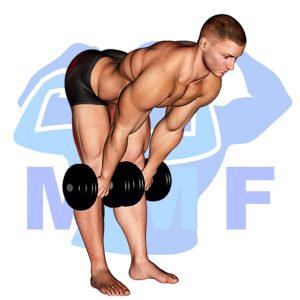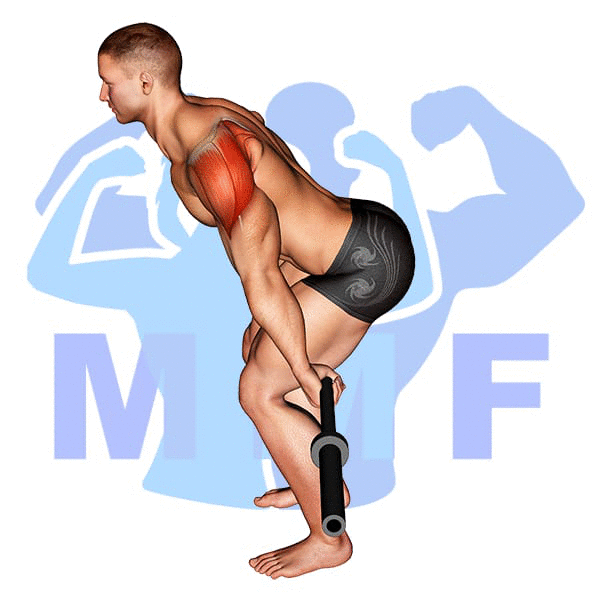Are you struggling to target your hamstring muscles despite consistent training? Do you find yourself questioning the effectiveness of your workouts? Perhaps you haven’t tried the cable leg curl – a highly effective exercise that may be just what your routine is missing. It’s common to overlook the importance of isolated hamstring exercises, but with proper execution, this underrated movement can improve your overall leg strength and balance. In this blog post, I’ll be detailing the benefits of the cable leg curl and how to perform it correctly for the best results.
Cable Leg Curl Summary
- Primary Muscles: Hamstrings
- Secondary Muscles: Gracilis, Popliteus, Sartorius, and Tensor Fasciae Latae
- Equipment: Cable Machine with Ankle Strap
- Mechanics Type: Isolated
- Force: Pull
- Utility: Auxiliary

Cable Leg Curl Instructions
- Begin by attaching a foot/ankle harness to a low pulley.
- Next, with the foot harness on your ankle, grab the support bar with both hands.
- Keep your elbows locked to support your body and lift your working foot slightly off the floor.
- Now pull the cable by curling your leg by bending your knee until you fully flex your hamstring.
- Return your leg to the straight position and repeat for a full set.
- Switch legs to evenly work both of your hamstrings.
Video Tutorial
Cable Leg Curl Muscles
Target (Agonist)
Synergists
- Gracilis
- Popliteus
- Sartorius
- Tensor Fasciae Latae
Dynamic Stabilizers
- Rectus Femoris
Stabilizers
Antagonist Stabilizers
- Tibialis Anterior

Benefits of Cable Leg Curl
The cable leg curl is an excellent exercise for strengthening the hamstrings, the muscles that run along the back of the thigh. This exercise is particularly beneficial because it allows you to target the hamstrings in a way that other exercises cannot. It helps to improve both strength and balance in the legs, as it requires you to keep your feet firmly planted on the ground while you pull the cable. Additionally, the cable leg curl can be modified to target different areas of the hamstring muscles, making it a great exercise for a complete hamstring workout.
Tips for Performing Cable Leg Curl
If you’re looking to take your cable leg curl to the next level, then you’re at the right place. These tips can allow you to fully benefit from this wonderful exercise and make the best of its results. You’ll be able to develop your hamstrings muscles, and reduce your chance of injury. So let’s get begin and see what these tips can accomplish for you.
- Maintain Proper Form: Make sure to keep your back flat, chest up and core engaged during the exercise. This will help to protect your back and ensure that you are getting the most out of the exercise.
- Increase Weight Gradually: Start with lighter weights and gradually increase the weight as you become more comfortable with the exercise. This will help to prevent any potential injuries while still allowing you to build strength.
- Focus on Quality Over Quantity: Rather than trying to do as many reps as possible, focus on doing each rep with perfect form. This will help to maximize your results and ensure that you are getting the most out of the exercise.
Benefits and Tips Video
Frequent Mistakes To Avoid
When it comes to executing cable leg curl, avoiding common errors can be the difference between a productive workout and a debilitating injury. Additionally, in order to maximize your benefits of the exercise, proper form is critical. Through avoiding common errors, you can raise your performance and get the results you want. But relax, it’s not as challenging as it might seem. By knowing the errors to avert and taking the right actions, you may complete the exercise safely and effectively. So let’s get started on how to avoid those common errors and making this exercise a standard part of your fitness routine.
- Not using the correct form: When performing the cable leg curl, it is important to maintain proper form to ensure maximum effectiveness and safety. Not using the correct form can lead to injury and decrease the effectiveness of the exercise.
- Not using the correct weight: When performing the cable leg curl, it is important to select the right weight for your fitness level. Using too much weight can lead to fatigue or injury, while not enough weight will not provide an effective workout.
- Not focusing on technique: It is important to focus on proper technique when performing the cable leg curl in order to maximize the benefits of the exercise and avoid injury. Not focusing on technique can lead to incorrect form, which can decrease the effectiveness of the exercise and increase the risk of injury.
Find More Cable Exercises Here
Variations and Complementary Exercises
The Cable Leg Curl is a great exercise for strengthening the hamstrings and glutes, but there are several other exercises that can be used to work the same muscles. Below are some variations, complementary, or alternative exercises that you can try to get a similar effect as the Cable Leg Curl.
Lever Lying Leg Curl (Machine)

The Lever Lying Leg Curl machine is a great complementary or alternative exercise to the Cable Leg Curl. This machine works the same muscles as the Cable Leg Curl, but in a different way. The Lever Lying Leg Curl allows for a deeper range of motion, allowing for a greater stretch and muscle contraction. It also allows for more control over the weight used and the speed of the exercise. This machine is great for those who want to add variety to their leg workout or for those who may have difficulty using a cable machine.
Dumbbell Straight Leg Deadlift

The Dumbbell Straight Leg Deadlift is an excellent complementary or alternative exercise to the Cable Leg Curl. It focuses on the posterior chain, specifically the hamstrings, glutes, and lower back muscles. Unlike the Cable Leg Curl, which works the biceps femoris, the Dumbbell Straight Leg Deadlift also engages the semitendinosus and semimembranosus muscles of the hamstrings. This exercise also works the core and stabilizing muscles of the lower back, making it a more comprehensive exercise for strengthening the entire posterior chain. Furthermore, the Dumbbell Straight Leg Deadlift helps to improve hip mobility, balance, and overall athleticism.
Dumbbell Stiff Leg Deadlift

The Dumbbell Stiff Leg Deadlift is a great alternative or complementary exercise for the Cable Leg Curl. This exercise specifically works the glutes, hamstrings, and lower back muscles. It requires more core stability than the Cable Leg Curl and can also help improve balance. The Dumbbell Stiff Leg Deadlift should be performed with a slow and controlled movement, concentrating on engaging the glutes and hamstrings. If a lifter feels any pain in their lower back while performing this exercise, they should stop immediately. This exercise is a great way to increase overall lower body strength and improve balance.
Check Out These Top Cable Exercises
Smith Machine Deadlift

The Smith Machine Deadlift is an excellent exercise to complement or substitute for the Cable Leg Curl. It works the same muscles as the Cable Leg Curl, but with a slightly different motion. The Smith Machine Deadlift involves bending forward at the hips and pushing through the heels to lift the weight, whereas the Cable Leg Curl involves pulling the weight up from the floor in a seated position. As such, the Smith Machine Deadlift allows for a slightly different motion and provides a more dynamic approach to lower body training. It is especially beneficial for those looking to increase their power and explosiveness.
Band Stiff Leg Deadlift

The Band Stiff Leg Deadlift is a great alternative or complementary exercise to the Cable Leg Curl. It targets the same muscle groups, including the hamstrings and glutes, but with a different movement pattern. It works the posterior chain muscles of the legs in an eccentric manner, which helps to build strength and stability in the lower body. It also helps to stretch out the hip flexors, which can become tight from sitting for long periods of time. The band provides resistance on the way up and down, making it an effective way to strengthen the hamstrings and glutes.
Find More Legs Exercises Here
Opposing Complementary Exercises
To ensure you are working both the agonist and antagonist muscles, you should incorporate exercises that work the opposing muscle groups. For example, exercises that work the glutes and hamstrings will help to balance out the Cable Leg Curl. Below is a list of exercises that target these opposite muscle groups.
Lever Leg Extension (Machine)

The Lever Leg Extension machine is an excellent complement to the Cable Leg Curl exercise, as it engages the opposing muscle group in the lower body. This machine works the quadriceps, the large muscles on the front of the thigh, to help build strength and definition. The Lever Leg Extension can be done seated or standing, allowing you to customize your workout to your individual needs. The range of motion provided by the machine helps increase flexibility and range of motion, while also working to strengthen the quadriceps. When combined with the Cable Leg Curl exercise, this machine helps create a balanced workout that targets both the hamstring and quadriceps muscles.
Barbell One Leg Squat

The Barbell One Leg Squat is a great complementary exercise to the Cable Leg Curl, as it works the opposing muscle group. This exercise targets the quadriceps and hip flexors, strengthening the muscles in the front of the thigh. It also engages the core and lower back muscles, helping to improve posture and balance. It can be done with either a barbell or dumbbell, and can be made more challenging by adding weight. The Cable Leg Curl works the hamstrings, glutes and calves, which are the muscles in the back of the leg. By combining both exercises, you can effectively strengthen both the front and back of your legs.
Split Squat

The Split Squat is a great complementary exercise to the Cable Leg Curl, as it works the opposing muscle group. The Split Squat is a compound exercise that works the quadriceps, glutes, and hamstrings. This exercise is performed by standing with one foot elevated on a bench or box and then squatting down on the other leg. This exercise helps to build strength in the lower body and improve balance. Working the opposing muscle group of the Cable Leg Curl, the Split Squat helps to create a balanced lower body workout.
Build Stronger Legs with Cable Leg Curls
Cable leg curls are a great way to strengthen the muscles in your legs. This exercise can help you build up your hamstring muscles, which are important for overall leg strength and stability. By using the cable machine, you can control the resistance and tension in your leg muscles, allowing for a more controlled and effective workout. Make sure to focus on form and avoid jerky movements to get the most out of this exercise. By incorporating cable leg curls into your workout routine, you can continue to build stronger legs and improve your overall fitness levels.
References: Wikipedia | ExRx.net | PubMed.gov | Comprehensive List of Legs Cable Exercises




